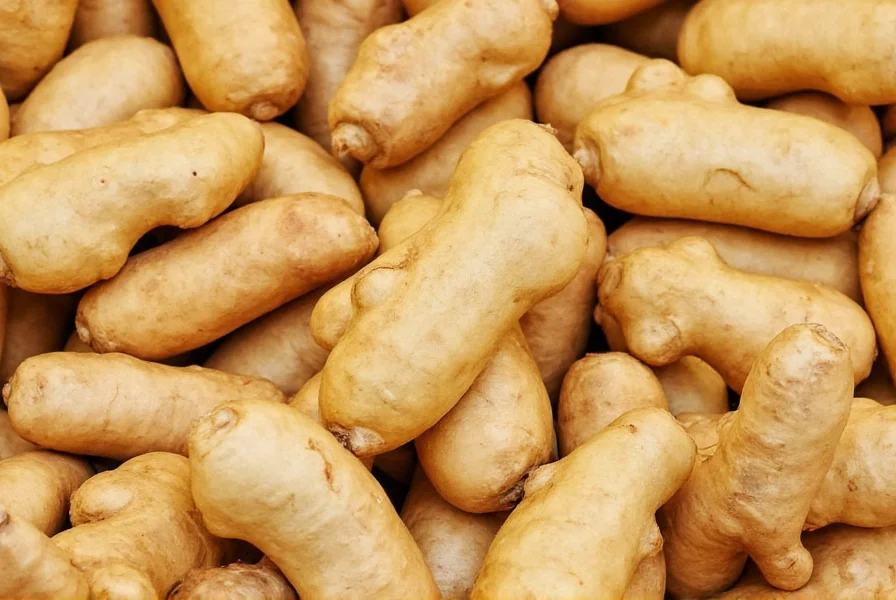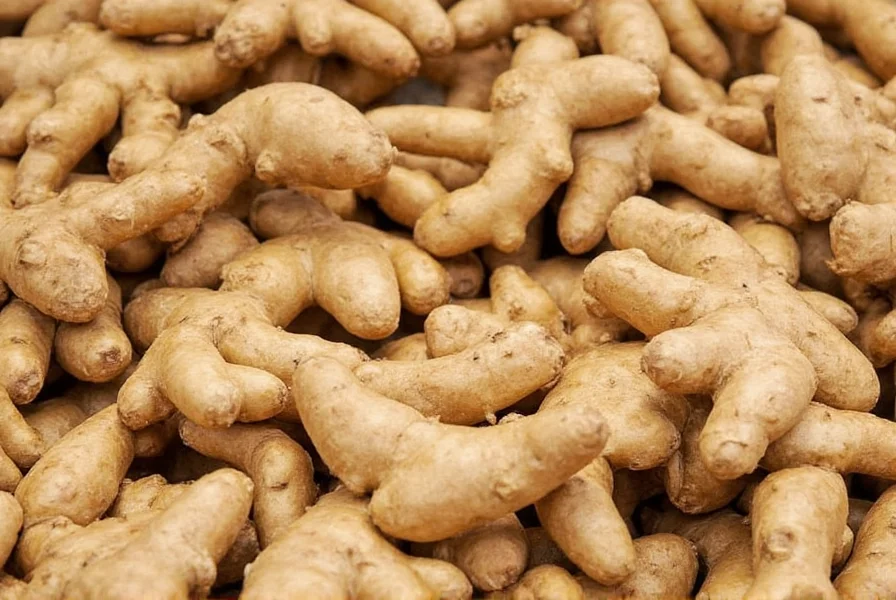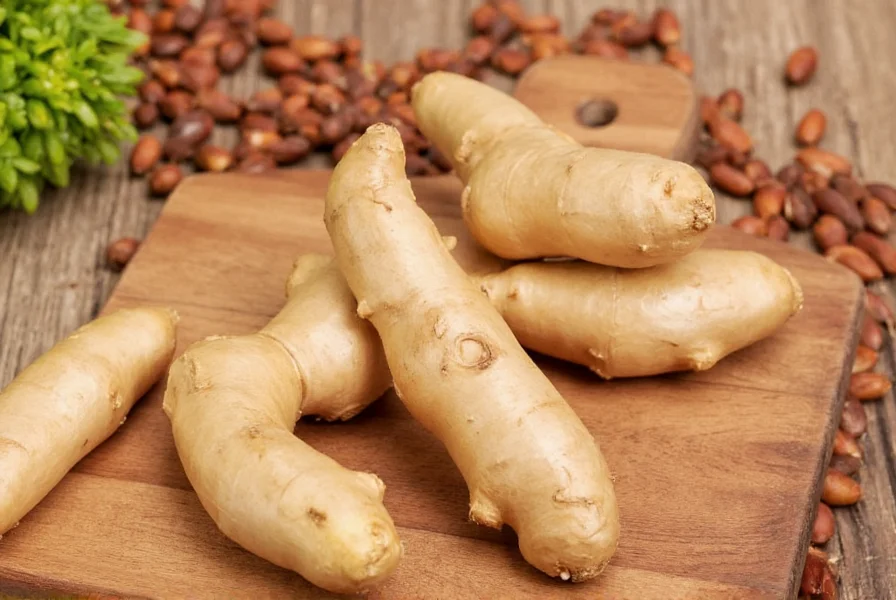Knowing precisely when to pick ginger makes all the difference between bland, underdeveloped rhizomes and flavorful, potent ginger ready for your kitchen or apothecary. Whether you're growing ginger in your backyard garden or managing a small-scale cultivation operation, understanding the harvest window transforms your results.
Key Indicators Ginger Is Ready for Harvest
Ginger doesn't send obvious signals like fruiting plants, but several clear indicators reveal the perfect ginger harvest season. The most reliable visual cue appears in late summer or early fall when the plant's vibrant green leaves begin turning yellow and gradually die back. This natural senescence process signals that the plant has redirected its energy from foliage to rhizome development.
Examine the soil surface around your ginger plants. When the rhizomes have reached maturity, you'll notice they've significantly expanded the soil surface, creating visible mounds. Mature ginger rhizomes typically measure 3-6 inches long with firm, plump segments and a rich golden-brown skin. Gently brush away soil from the top of a rhizome to check its development without disturbing the entire plant.
| Harvest Stage | Time After Planting | Appearance | Best For |
|---|---|---|---|
| Young Ginger | 4-6 months | Pale yellow skin, thin texture | Salads, pickling, fresh consumption |
| Mature Ginger | 8-10 months | Golden-brown skin, firm texture | Cooking, drying, medicinal uses |
| Over-mature Ginger | 12+ months | Cracked skin, fibrous texture | Limited culinary value |
Young Ginger vs Mature Ginger Harvest
Understanding the difference between harvesting young ginger versus mature ginger significantly impacts your culinary and medicinal applications. Young ginger, harvested around 4-6 months after planting, features tender rhizomes with thin, pale skin and a milder, juicier texture. This stage works beautifully in salads, stir-fries, and pickling recipes where you want ginger flavor without overwhelming heat.
For maximum potency and traditional medicinal applications, wait until your ginger reaches full maturity at 8-10 months. During this extended growing period, the rhizomes develop higher concentrations of gingerols—the compounds responsible for ginger's characteristic heat and many health benefits. Mature ginger has thicker skin, denser flesh, and delivers the robust flavor profile essential for baking, spice blends, and therapeutic preparations.

Climate and Growing Conditions Impact
Your local climate significantly influences the ideal optimal ginger harvest time. In tropical regions with consistent warmth and humidity, ginger typically reaches maturity in 8 months. Temperate zone growers may need to allow 9-10 months for complete development, especially if growing in containers that experience more temperature fluctuations.
Rainfall patterns also affect harvest timing. Excessive moisture during the final weeks before harvest can cause rhizomes to become waterlogged and prone to rot. Conversely, drought conditions may trigger premature leaf dieback, creating a false signal that ginger is ready. Monitor your specific growing conditions rather than relying solely on calendar dates.
Step-by-Step Harvesting Process
Follow these steps for successful ginger harvesting:
- Stop watering 1-2 weeks before harvest to allow soil to dry slightly
- Cut back yellowing foliage to 2-3 inches above soil level
- Use a garden fork to gently loosen soil around the plant perimeter
- Lift rhizomes carefully to avoid bruising or breaking
- Brush off excess soil (avoid washing at this stage)
- Cure rhizomes in a shaded, well-ventilated area for 7-10 days
Never pull ginger plants from the ground by their stems, as this often damages the delicate rhizomes. Instead, work methodically around the plant to preserve the integrity of your harvest.
Post-Harvest Handling and Storage
Proper post-harvest treatment preserves your ginger's quality. After curing, store mature ginger in a cool, dark place with moderate humidity (60-70%). Whole, unpeeled rhizomes maintain quality for 3-4 weeks at room temperature or 2-3 months when refrigerated in a paper bag.
For long-term storage, freeze peeled ginger in airtight containers or dry it for powder. Never store ginger in plastic bags, which trap moisture and accelerate spoilage. If you've harvested young ginger, use it within 1-2 weeks as its thin skin offers less protection against dehydration.

Common Harvesting Mistakes to Avoid
Many gardeners make critical errors when determining when is ginger ready to pick. The most frequent mistake involves harvesting too early based on rhizome size alone. Small ginger doesn't necessarily mean immature ginger—some varieties naturally produce compact rhizomes.
Another common error occurs when growers harvest immediately after heavy rainfall. Waterlogged rhizomes have higher moisture content, which reduces shelf life and increases susceptibility to mold. Always wait several dry days after rain before harvesting.
Finally, many people fail to properly cure their ginger. Skipping the curing process results in rhizomes that deteriorate quickly. The curing period allows the skin to harden slightly, creating a natural protective barrier against moisture loss and pathogens.
Troubleshooting Harvest Timing Issues
If you harvest ginger too early (before 8 months), you'll notice smaller rhizomes with less developed flavor and lower concentrations of beneficial compounds. While still usable, early-harvested ginger works best in applications where subtlety is preferred.
Harvesting too late (beyond 10-12 months) presents different challenges. Over-mature ginger develops tough, fibrous texture and may begin to crack or sprout new growth. In tropical climates, extended ground time increases vulnerability to root rot and pest damage.
When in doubt about signs ginger is ready for harvest, perform a test dig on one plant while leaving others in the ground. This allows you to assess maturity without committing your entire crop to harvest.
Frequently Asked Questions
Can you harvest ginger when it's still green?
Yes, you can harvest young ginger at 4-6 months when the plant is still green. This 'baby ginger' has a milder flavor and thinner skin, ideal for fresh consumption in salads and stir-fries. However, it lacks the full flavor development and medicinal compounds of mature ginger harvested at 8-10 months.
How do I know if my ginger is ready without digging it up?
Look for yellowing leaves and reduced foliage growth, which indicate the plant has redirected energy to rhizome development. You'll also notice the soil surface mounding where rhizomes have expanded. Gently brush away soil from the top of a rhizome to check for firm, plump segments with golden-brown skin without disturbing the entire plant.
What happens if I harvest ginger too early?
Harvesting ginger before 8 months results in smaller rhizomes with less developed flavor and lower concentrations of gingerols (the compounds responsible for ginger's heat and health benefits). The skin will be thinner and more delicate, reducing shelf life. While still usable, early-harvested ginger works best in applications where subtlety is preferred, like fresh juices or delicate sauces.
Can I leave ginger in the ground over winter?
In USDA zones 8 and warmer, you can leave ginger in the ground over winter with proper mulching. In colder climates, rhizomes will likely rot or freeze. Even in suitable climates, leaving ginger beyond 12 months increases risk of rot, pest damage, and fibrous texture. For best quality, harvest at 8-10 months and replant saved rhizomes in spring.
How long after flowering should I harvest ginger?
Ginger flowering doesn't directly indicate harvest readiness. Many ginger varieties rarely flower, especially in non-tropical climates. Focus instead on leaf color (yellowing) and growth patterns (dieback). If your plant does flower, harvest 2-3 months after flowering concludes, as the plant redirects energy from blooms to rhizome development.











 浙公网安备
33010002000092号
浙公网安备
33010002000092号 浙B2-20120091-4
浙B2-20120091-4